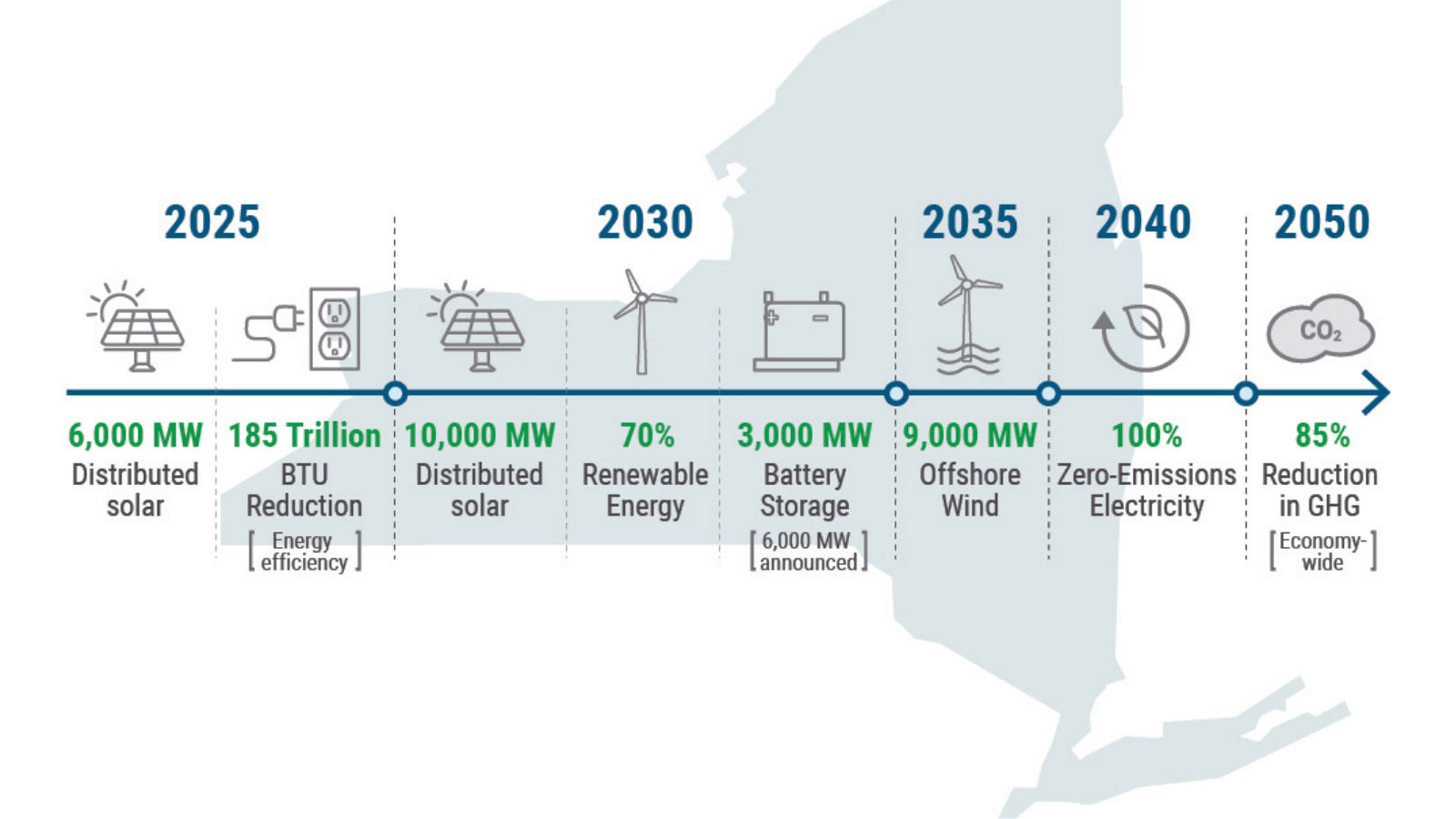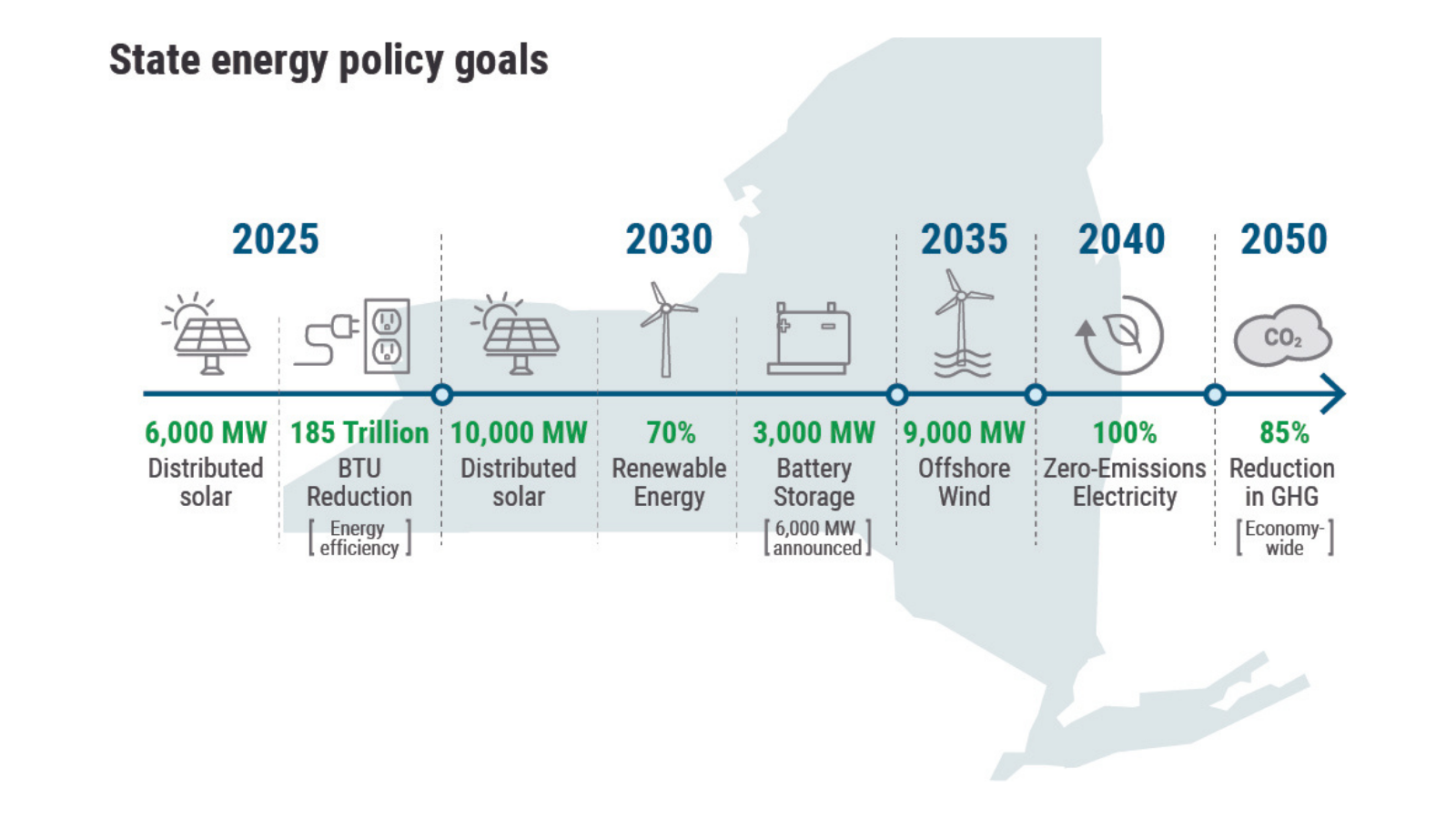Public Policies and the Transformation of NY's Electric Grid

State and local requirements in New York have created what are arguably the most aggressive climate change requirements in the nation. The question of how to maintain electric system reliability on the road to meeting the state’s decarbonization mandates has become a central focus among policymakers and industry stakeholders.
The electric grid is undergoing tremendous change in response to these government policies. And the NYISO is at the center of that effort, balancing reliability and designing market changes in response to these laws to promote the right investment in new technologies.
One recent example: the development of comprehensive mitigation reform, which was accepted by the Federal Energy Reliability Commission in May. This reform, which impacts how certain clean energy projects are funded, will help clear the way for greater investment in solar and wind resources larger than 20 megawatts.
Other New York State clean energy policies are driving investment in non-emitting electricity supply, while environmental regulations are increasing restrictions on emissions from fossil-fuel power plants.
Examples include:

The Department of Environmental Conservation’s Peaker Rule, adopted at the end of 2019, reduces ozone-contributing pollutants associated with New York State-based peaking unit generation. Compliance obligations phased in between 2023 and 2025 will impact approximately 3,300 megawatts (MW) of electricity generation. We are actively assessing the implications of compliance plans for this rule in our reliability planning processes to determine whether the plans trigger reliability needs that must be addressed with solutions to maintain system reliability. We retain the ability to keep some of these resources operating on a temporary basis if reliability requires it.
The Accelerated Renewable Energy Growth Act seeks to accelerate the siting and construction of eligible renewable resources and calls for cost-reduction studies by establishing a state office to oversee permitting approvals for renewable resources larger than 25 MW. It is also intended to establish new transmission investment priorities to facilitate the achievement of state policies. The act also calls for use of NYISO’s competitive Public Policy Process to meet transmission needs and CLCPA goals.
The New York City residual oil elimination mandate prohibited the consumption of fuel oil no. 6 beginning in 2020 and prohibits no. 4 beginning in 2025. The mandate is expected to impact nearly 3,000 MW of generation in NYC. It addresses a small percentage of energy production that is often called upon during critical periods, such as when severe cold weather limits availability of natural gas. Dual fuel capability serves as both an important tool in meeting reliability and an effective economic hedge against high natural gas prices during periods of high demand.
Local Law 97 will result in the electrification of heating and cooking in about 50,000 of the one million NYC building systems that currently rely on fossil fuel. This move is expected to significantly increase demand for electricity. Compliance begins in 2024 and calls for a 40% reduction in 2024 and 80% by 2050.
Impacts on New York’s grid
As we move to a zero-emissions grid, it’s critical we understand how the growth of intermittent resources and extreme weather could impact the ability to maintain reliability of the New York electric system. While public policy is driving much needed change, the retirement of fossil-based resources is outpacing the development of new renewable-based resources and other dispatchable, emissions-free resources. The effect is that reliability margins will thin to concerning levels beginning in 2023, highlighting the need for new dispatchable, emission-free resources to maintain grid reliability and resilience.
These public policies have also focused efforts on electric building heat and cooking and electric vehicles.
This shift is expected to grow electric demand in winter, eventually making the cold-weather months the highest-demand period of the year. Our planning experts are already working with future models to understand how these new technologies will perform and what other system changes may be needed.
For more on how we are preparing for a changing grid, see our Power Trends 2022 webpage to access our full report, datasheet, additional downloads, and resources.

